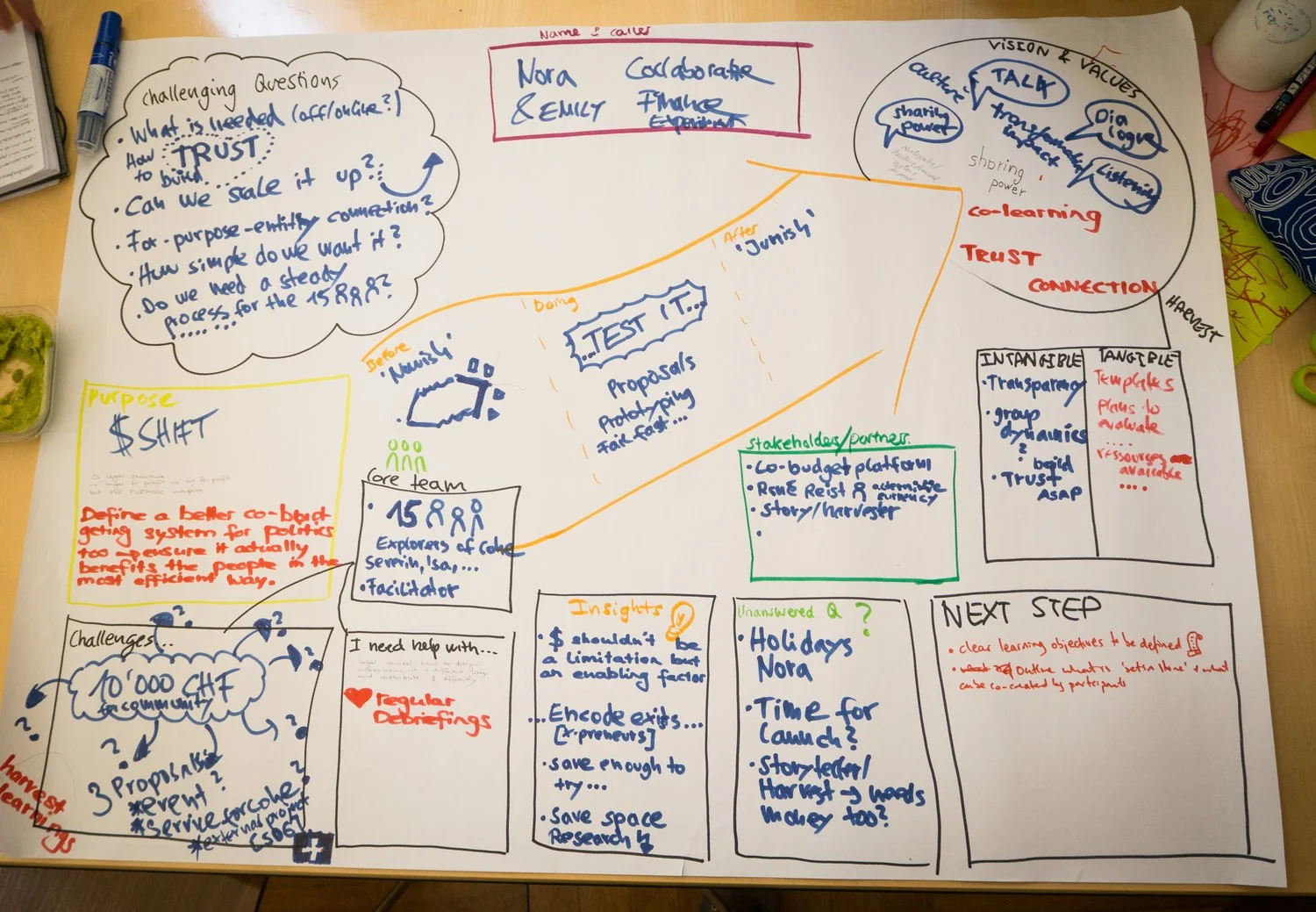Design For Wiser Action
From the Art of Hosting
What is the purpose of this method?
Impressions from the collaboratio helvetica Community Forum where this method was applied.
The Design for Wiser Action is a great way to co-create a project or a piece of work with the help of diverse perspectives. The process enables all participants to put their learnings and experiences in service of new creative projects. On the one hand, the process enables the project-giver to get support and advice and on the other hand it allows for the collective intelligence to unfold.
Briefly explained, a person is asked to share a project or piece of work they are responsible for (“project caller”) and invite a group of people to contribute to the thinking and design of actions that will bring it to life. Through the exploration of questions like “what is the need or purpose”, “who is the group” or “what methods will most support a wise action”, insights and solutions for the implementation of the project will be found.
The Art of Hosting community created a canvas (“harvesting template”) which outlines several prescriptions which form the building blocks for the planning activities. Everything that emerges during the group conversations is written down into the assigned blocks.
What does the process look like?
Invite persons to bring a project or a piece of work (a fews days in advance)
Explain the method to all the participants (10min)
Introduce the chosen projects (2-3min per project)
Explain the empty canvases and go through the questions the participants will be working with (10min)
Project design/Group work (75min)
The participants form groups and circle around a project canvas (5min)
Each project-giver briefly introduces his/her project (10min)
The groups ask questions and the project-givers answer (10min)
Co-creation: Fill in the canvas blocks with ideas that come up during the sharing of experiences and learnings (20min)
Peer-Coaching: The participants turn into coaches who start a discussion about the project. The project-giver steps out of the circle and just listens to the conversations of the “coaches” (15min)
The project-giver returns to the group and continues with the conversation based on what he/she have learnt while being out of the circle (15min)
Return to the full group with all the participants and report back on the different outcomes (10-20min)
If there is more time available, the participants can shift tables and do the whole procedure for another project.
Tools, materials, Time, Roles
Our example of the harvesting template.
Questions that guide the conversation (“what is the need” etc.)
The harvesting template
A good work space/ good working atmosphere
Optimal timing 2-4 hours (depending on whether the participants work on only one or several projects)
Roles:
One or two Hosts: They introduce the process to the group and invite and instruct the project-givers, hosting the full group processes
Project-giver (“caller”): This is the person who wants helps on becoming clear and crafting focus, design and practice in action, applied to a particular event or events
Co-designers: Are the people who help to co-create design.
Sources
The Design for Wiser Action method comes from the Art of Hosting.
http://aohcorrymeela.weebly.com/design-for-wiser-action.html
https://uccommunity.org.au/sites/default/files/designing_for_wiser_action.pdf
https://www.sdc-learningandnetworking-blog.admin.ch/2015/07/29/design-for-wiser-action/
http://www.theharvesthub.org/design-workshop-2014/day-2-designing-for-wiser-action


